Madhyamika (Ch. 8 of my MA Thesis)
To[d1] begin with let me first say that Fenner’s The Ontology of the Middle Way differs significantly in approach from both Huntington’s The Emptiness of Emptiness and Garfield’s Empty Words. Fenner’s methodology is a thematic reconstruction of Candrakirti’s Introduction to the Middle Way, which utilizes, “a psycho-philosophical framework,” for investigating the relationship between reason and insight (Fenner 6). As such, Fenner’s work is almost the very opposite in spirit from Huntington’s deconstructive strong misreading. Fenner also goes beyond Garfield’s philosophical reconstruction by addressing more directly the psychological and experiential dimensions of Madhyamika emptiness meditation. Another of Garfield’s virtues is that he does not allow any public-language assumptions to intrude and distort his understanding of Candrakirti’s text.
Fenner’s psycho-philosophical reconstruction revolves around the issues of the nature of Emptiness and the bodhisattva path but the real driving question to which much of his research can be seen as a response to is the following: “Is the realization of a logical conclusion to a consequential analysis necessarily productive of some measure of insight into emptiness?” (Fenner 148) And this is also the question that justifies and unites much of what I have said so far with the help of Rappaport and Chomsky. Therefore, I will first address Fenner’s response to the above question in relation to Rappaport before looking directly at the nature of the bodhisattva path, analysis, meditation, and finally Fenner’s affinity with Chomskian assumptions about language and experience.
Fenner writes that the question of discovering a relationship between reason and insight in Madhyamika is complicated by the fact that, as he says, “The logic of the Madhyamika is not pen-and-paper logic but a logic embedded in the experience of Madhyamika philosophers” (Fenner 148). The word “experience” here does not necessarily refer to the insight of Emptiness itself, but rather to the experience of a practitioner as opposed to a scholar (Fenner 148). The difference is that “while the [scholar] might have a sympathy and intellectual appreciation of consequential logic, i.e., gain an understanding at the level of thought, presumably only the disciplined mediator was thought to be able to realize any soteriologically significant effects” (Fenner 148). An appreciation of Kant’s third Critique can help us to better understand the difference between the scholar and the practitioner, or by analogy, between the artist who experiences the Sublime and the critic who reads, writes, and otherwise studies the logic of Sublime experience.
In fact, the analogy between the ascetic experience of the Sublime and the experience of Emptiness in Madhyamika meditation can be drawn tighter still. Both cases, i.e., the experience of insight into Emptiness and into the Sublime, are brought about by surviving a kind of cognitive breakdown. For instance Kant says that it is the failure of our imaginative and rational faculties to give an account of the Sublime state of mind that “excites in us the feeling of a supersensible faculty…. the sublime is that, the mere ability to think which shows a faculty of the mind surpassing every standard of sense” (qt. in Adams 393). Similarly, one can argue that consequential analysis in Madhyamika meditation is a self-conscious attempt at bringing about just that kind of Sublime cognitive breakdown that reveals Emptiness as our “supersensible substrate” “surpassing every standard of sense.” Indeed, I hear Fenner making just this kind of argument, but in different words, when he writes that in Madhyamika meditation:
a stream of conceptuality…is redirected by consequential analysis into becoming aware of an inherent paradox in predication that, by its tendency to compel consciousness to assume the psychologically impossible (or at least structurally unstable) condition of forming two mutually contradictory structures, results in a failure in the ability to predicate, and consequently a destructuring and dissolution of conceptuality that can be interpreted as the insight into emptiness. (Fenner 122)
The value, I think, of reading Kant’s third Critique alongside Madhyamika is that it can give us a Western, and hence more familiar, vocabulary to think about not only the experience of Emptiness, but also about of the huge distance between reading, thinking, studying, etc., on the one hand, and experience on the other. No one would think that they had just experienced the Sublime after reading Kant. And no one should think that they can experience Emptiness simply by reading Nagarjuna. Nevertheless, it is reasonable to be thinking of Kant’s Sublime in the back of our minds as we read from Fenner that, “The realization of emptiness, like most mystical experiences, is said to be ineffable. The reasons for this are that emptiness is finally non-conceptual and hence inconceivable. It transcends mental constructs [etc.]” (Fenner 38).
Of course one can come, as Rappaport might say, to a low-level understanding of emptiness as a conclusion or inference drawn from a set of premises the way that Garfield does with his “limit contradiction” demonstration. When I say “low-level understanding” I do not exactly have “conventional truth” in mind, for while I think there is overlap between what can be called “low-level meaning” and “conventional truth” the two are not quite the same because, for example, I could write the conventional truth as a low-level formula, a mid-level metaphor, or I could just embody it by simply being conventional. Still, while I do not deny that a “conclusion” inscribed in, say, Garfield’s symbolic logic is of some or even greater value as a first step, I think Fenner better represents the spirit of Buddhism when he makes clear that:
According to Madhyamika there are two modes wherein emptiness can be cognized…. The [first] occurs in a yogin’s meditations during which they concentrate on emptiness itself…[and the second] occurs in the yogin’s ante- and post-meditative experience during which they are cognizant of appearances…in terms of the similitude’s of emptiness [experienced in the meditation]. (Fenner 89)
As we will see the first mode can best be thought of in term of Rappaport’s high-level meaningfulness, and the second post-meditative emptiness in terms of middle-level meaningfulness. In the first mode, the meditator can best be seen as an index embodying the meaning of Emptiness, and the second he or she can best be seen as an icon half-way between, or in some metaphorical way resembling, both the reality of appearance and the reality of Emptiness. As the bodhisattva approaches the higher levels of attainment the situation changes, but something like the above description is true of the first half of the bodhisattva’s development, or so I imagine. As we will see, it is important to maintain a distinction between an arhat who has realized Emptiness, and a Buddha who completely embodies the fully evolved mind. But before we address what I would call the spiritual transformations of the bodhisattva, we need to understand the nature of the path and why it is “typical of Madhyamika thought,” as Fenner reminds us, “that analysis is meant to be a direct and efficient cause for producing the insight in emptiness” (Fenner 99).
This “typical Madhyamika thought” must here be taken out of context, because as we have seen Fenner has already distinguished between “the scholar” and “the practitioner.” The context of analysis, which is also what separates the scholar from the practitioner, is meditation. There are different forms of meditation, but one form or another is a constant practice from stream-winners to the tenth level bodhisattva. Thus in our discussion of Fenner we should endeavor to keep meditation in mind even while we speak of logical analysis.
The path of the bodhisattva from the Madhyamika school of Mahayana Buddhism as represented by Candrikirti is divided up into two stages, ten levels or perfections, and five paths. The first stage comes with the intuition of emptiness as impermanence and the second stage, which occurs at the seventh level, comes with the direct and permanent realization of Emptiness. The five paths are those of “accumulation,” “connecting,” “intuition,” “meditation,” and “completion” (Fenner 87). The bodhisattva path proper, that is, the path of a bodhisattva as a “saint” begins once he or she enters the “third path” of intuition, which is also the first of the ten perfections or levels of the bodhisattva path. I will not address directly the ten stages, except to say a few words about compassion and skillful means toward the end of this section on Fenner. But I do want to address the five paths.
Note that first three paths, those which lead to sainthood, mirror the distinctions that Rappaport draws in his hierarchy of meaningfulness. That is, the first path, of accumulation, is one of gathering and memorizing information of low-level meaningfulness. The second path, of connecting, is one of mid-level meaningfulness, where one unites the information into more meaningful connections through an iconic form of imagination; here is where the meaning of concepts or “the realities, values and attitudes that the religious literature describe” are realized “existentially” (Fenner 20). I will have more to say about the second path once we turn our attention to what Chomskian assumptions can contribute to our understand of Fenner. The third path, of intuition, appears to mirror Rappaport’s high-level meaningfulness in that a “saint” is an index of embodied meaning. This third path is irreversible and the saint is called a “stream-winner” and enters the first level. (At the seventh or eight level, called “immovability” he or she becomes the equivalent of an arhat.) The fourth and fifth, meditation (vipasyana) and completion, take us beyond the realization of Emptiness and I will address them after all else is said about the first three paths (Fenner 86 - 87).
Now getting back to accumulation, or the first path, the question for us is what exactly is accumulated? The obvious answer is the vocabulary of Buddhist philosophy, but the less obvious and more important for Madhyamika specifically is so-called “principles of thought.” These would be the “Aristotelian” principles of “Contradiction (x)-(Fx&-Fx), Identity (x) (Fx=Fx), and Excluded middle (x)(Fx v –Fx)” but also a very important fourth principle that Fenner brings forth and calls, “the principle of definition through logical opposites” (Fenner 116). Furthermore, Fenner tells us that these four principles, “describe certain structures that govern the training and development of an analyst’s thought at the time of debate and meditation, and so are psychological principles as well as formal axioms. And insofar as analysis is thought to have a liberative effect, they are also prescriptive principles…for guiding the course of conceptuality” (Fenner 116). These are the principles that guide the engine of the reductio ad absurdum arguments of prasangika-madhyamika. The consequence of these consequential arguments is that the conceptualizing mind grinds to a halt. Thus we can see why the fourth principle becomes so important, that is, it allows one to address both x and –x at the same time since we know that they arise together as logical opposites of each other. “Hence [madhyamika] is a type of analysis that,” as Fenner puts it, “tends not to proliferate and perpetuate itself, but rather which does the converse and ameliorates and is meant finally to result in a complete attrition of conceptuality” (Fenner 103). Indeed, Fenner goes farther and admits that this Candrakirtian interpretation “is more far-reaching than many estimates of the Madhyamika dialectic for it credits the dialectic with more than an intellectual establishment of the sunyavada. Rather, analysis induces the very realizations which are understood to free yogins from the bonds of samsara” (Fenner 103). But to see how this dialectic works existentially we have to turn our attention to the next path, the path of connecting.
The result of accumulating the Buddhist vocabulary and the prasangika methodology is that the student now has the tools to make connections. But what exactly is being connected and how exactly are those connections made in the meditative context? Fenner, with some plausibility, suggests that we look for the answer in our brain cells. For example, he writes:
If the conflict between premises is mirrored at the neural level we could further speculate that this would involve a tendency for one neural structure to be formed or activated into two mutually excluding states, a tendency which would be responded to by assuming one state and relinquishing the other (this would be the Madhyamikas regressive option, and would be exhibited as a failure to conclude a proof) or by a destructuring of the neural state due to its being formed into an impossible condition (this would manifest a conclusion to a proof). (Fenner 118)
However, I am not sure that this is the best way to think about what might be happening in the meditator’s mind/brain for while ideas may conflict I am not sure that neural transmitters do, or at least not in a way analogous to the way ideas conflict. Also, Fenner’s neural collapse theory does little to explain how the concept of emptiness becomes connected to the experience of Emptiness.
A better approach can be found by looking at the work of Rappaport and Chomsky. We have seen that Rappaport understands meaning as an intergrated hierarchy where, for example, mid-level meaning depends on low-level meaning. Therefore, when Fenner writes that the practitioners could expect, “to gain profound and existentially far-reaching results from their analyses,” and notes also that, “exactly how experientially profound a logical consequence might be expected to be would be dependent on how thoroughly the connections and dynamic dependencies between concepts and affects were ascertained and to what extent the deeper levels of conceptuality were penetrated,” he might be touching upon just the kind of hierarchy of meaning that Rappaport describes (Fenner 148).
However, the process of moving from the first path of accumulation to the second path of connecting is not as simple as it seems for we must remember that the analysis takes place mainly in meditation. Which is why Fenner tells us that, “even from the stage of memorization, monks would have been engaged in those meditative practices which gave them access (in however a diluted or adulterated a form) to the religious experiences that their texts either described or assumed a prior knowledge of” (Fenner 23). The point is the analysis and meditative practices go hand-in-hand; they mutually support and reinforce one another. And here is where Chomskian assumptions begin to be useful as a heuristic.
Take “love” for example. On Chomskian assumptions we are all born with the concept and its “base-line” meaning. That is, after a few exposures to the label “love” in our immediate environment we all know how, when, and why to use the term. Nevertheless, if we want to “learn” more about the meaning of love we have a few options available to us. We could, for example, ask a philosopher, a psychologist, or even a biologist, all of whom would give us low-level answers to our questions. We could also read, say, Dante’s love poetry or Tolstoy’s Anna Karenina, which would give us mid-level answers. But obviously, if one really wants to know the full meaning of love one has to become, embody, or otherwise be in love. It is in this since, I believe, that Fenner writes that, “meaning is empirically derived, and hence that the requisite and appropriate experiences were needed on behalf of students in order to make sense of the texts they studied” (Fenner 23). If one wants to know what Dante means by all the nice words he showers on Beatrice one has to begin by feeling and experiencing certain states of mind apropos the presence of another person. By analogy, if one wants to know what the Buddha means by all the talk of non-self and Emptiness one has to begin by feeling and experiencing certain states of mind apropos one’s own self-awareness. Meditation is as well suited for this latter task as the appropriate partner is suited for the former. Indeed, “students were expected,” according to Fenner, “to acquire the experiential correlates to the referential terms occurring in their texts” (Fenner 23).
In other words, just because we are born with the innate meaning of concepts in our heads does not mean that we are born with the experiences that raise that base-line innate meaning up through the ranks of low-level and mid-level meaning, and finally high-level meaning. However, as Chomsky notes, there is no direct connection between words, or labels, and their referents, but nevertheless, the words are important because they help us by pointing us in the right experiential direction.
The second path, that of connecting, is best seen, I think, as the part of the process were the words begin to make mid-level sense in that it is on this “path” that we begin to see where the language is pointing us. We do so by combining some of the distinctions that we worked so hard to make into existentially more meaningful wholes. Moreover, phenomenologically we could say that on the connecting path meaning becomes less symbolic and more iconic in that the actual meaning that we experience begins to resemble the experiences that the words purport to describe. That is, we begin to understand that both the pointing finger and the moon are connected by a directional relationship relative to where we ourselves are. We need to know something of the finger and something of the moon before we can bring our knowledge of both together in order to bring ourselves safely there.
Therefore, and in accordance with Rappaport’s hierarchy of meaningfulness, we now need to bring the path of accumulating and connecting together in order to arrive at the third path of intuition. (The fourth and fifth paths begin with the “immovable” stage and as such, I believe, the process of further attainment takes on a different quality or kind of integration and as already noted above will be addressed separately.)
For now, let us review the first two paths in preparation for bringing them together by considering these words from Fenner: “Epistemically, each of the three steps [i.e. the first three paths] in the knowledge yoga path can be correlated with a particular knowledge situation. That is to say, each is based on a particular mode of knowing (pramana), within which there is a claimed evolution towards epistemological certitude” (Fenner 25). In the first mode of knowing or path of accumulation, he reminds us, the practice is called “perusal meditation” and “involves going over an entire body of instruction, written, and oral, in order to become familiar with its contents” (Fenner 24). In the second mode of knowing, or the path of connecting, he reminds us, the practice is called “analytical meditation” and “consists of investigative contemplations which, based on reasoning and experience, produce logical and experiential consequences of a kind that confirm and consolidate the import of philosophical texts” (Fenner 24). However, and here is where we make the leap to the third path and high-level meaningfulness, Fenner goes on to note in the very next sentence that:
The most important form of conformational reasoning is that based on the functional ability of textual formulations to be acted upon and cause change. This involves a student checking in his or here own experience and among his contemporaries, to see if the results said to accrue from practicing meditation and acting on the basis of textual formulations do in fact accrue. This form of test is based on the criterion of the power of intentional action (arthakriya-sakti). (Fenner 24).
The point is that once the referents of the concepts have been discovered and located they must be embodied. This embodiment is the high-level meaningfulness of Rappaport’s hierarchy. The mode of knowing of the third path is true “cessation meditation” and it is based on the Buddhist practice of mindfulness. Here is how Fenner describes the practice of the third path:
It is based on a development of serenity and mental integration, and in Buddhism consists of a special discernment (vipasyana) meditation that claims to penetrate to the core of reality…. The insight of [vipasyana] meditation (bhavanamayi-pranja) is purportedly non-indexical or rather self-indexing, for meanings become known without having to make reference to any symbol or symbol system. It is also said to be self-certifying and hence incorrigible for the reason that it is direct experience that is uninterrupted. (Fenner 24)
At this point Rappaport would say that the saint is a saint because he or she has become the meaning of the text as an index of Emptiness the way that, say, a wind sock is the index for wind direction. And as such one can now see that what is said (low-level) is not as important as how it is said (mid-level), and that neither of these two modes is as important as who is doing the saying. This is the reason why to really understand the nature of Emptiness, apart from discovering it yourself as a kind of pratyabuddha, one needs to learn it from a master. As Fenner puts it, the first two paths are focused on “the lexical-com-symbolic and semantic-com-experiential work of correlating words and meanings,” while “the final path [i.e from the third or last path of the first stage onwards] …. would be distinguished from the previous one [or first stage] by an increasing emphasis on meanings and a de-emphasis on symbol systems” (Fenner 24).
It is at this point in the discussion of Fenner’s work that we can best begin to see the contribution that an understanding of the Chomskian assumptions about language can make to our overall grasp of Madhyamika. Because it is here that we see most clearly that language and thinking are not the same thing. Thinking has to do with the flow and manipulation of pure meaning, while language has to do with the innate organizational structure of meaning, and not meaning as such. Understanding this claim will allow us to answer two questions or problems that Fenner sees in Madhyamika, and of which he writes that, “such problems as these are of course tolerable…as unavoidable in any samvrtic [convention truth] account of reality, and perhaps we must content ourselves also with at least some degree of tolerance to [these] problems” (Fenner 111). The first problem, according to Fenner, is “How do entities retain their identity after their bifurcation given that identity is said to be dependent on reciprocity?” The second problem, “is that of how an absolute or paired term comes to be created in the first place. That is to say, given that two logical opposites arise in dependence on each other, from what do the two arise” (Fenner 111)? Despite Fenner’s assurance that we can simply tolerate these problems, my assumption is that conventional truth cannot conflict with ultimate truth, and besides, I think, we can propose some solutions.
The answer to the first problem can first be seen in Rappaport. That is, we have already seen that low-level meaning, in this case interdependent logical opposites, is not lost when brought up into mid-level meaningfulness. From the higher perspective one does not lose sight of the distinctions upon which the identity of entities depend, but rather one sees through the distinctions to the Emptiness that entities have in common. However, the above Rappaport-inspired solution, if true, could only be true if Chomsky is right about the nature of language. In other words, contrary to the implication of public-language assumptions, it is because words are not in any way in contact with or attached to the world and its furniture that we can use them to communicate in a variety of ways about experience. Thus, for example, Rappaport can convey low-level meaning by writing literally about metaphors, or if he chooses, convey mid-level meaning by writing metaphorically about literal meanings, and in the process he indicates to us (that is, he communicates to us at a high-level) his insight by writing what he does in the way that he does it. All of which is possible only because language is a tool for thought that can also be used in a wide varieties of ways for communications. Language, or strictly speaking I-language, in itself has no more serious metaphysical implication than any other natural process. In other words, the first problem is really no problem at all, just a shadow cast by a public-language fantasy.
The answer to Fenner’s second problem (How does an absolute or paired term come to be created in the first place?) is more interesting because it was right under his nose. That is, Fenner notes that conceptualizations that must be brought to a halt with the consequential analysis of analytical meditation is of two basic kinds: the first is “intellectual” and is relatively easy to undermine, but the second, or what he himself calls “innate (sahaja) concepts,” is much harder to dissolve. “Between [the] intellectual (parikalpita) and innate (sahaja) concepts…the intellectual conceptualizations are more superficial and less deeply ingrained and entrenched than the innate ones” (Fenner 147).
Therefore, in regard to the second problem, Fenner answers his own question, or, almost anyway. The paired terms, by which he means that when we can conceive of x we can automatically conceive of –x as well, come into existence like other concepts, namely, innately as part of the inner workings of language faculty and its Universal Grammar. At some point we might have to address the psychologism and anthropologism implied above.
Now, however, the reader might be reasonably wondering, “Well, doesn’t the innateness of UG create an insurmountable obstacle toward realizing Emptiness since dichotomizing conceptualizations appear to be hardwired into our mind/brains?” But I do not think so, and the reason I don’t is that the Buddhists do not come at this problem of innate concepts from the outside the way that linguists and philosophers do but rather they “rewire” from the inside. Indeed, the account that Fenner gives of how the Madhyamikas deal with innate concepts is fascinating and to the point:
It seems that while the surface aspects or components of conceptuality exist at the level of conscious experience, (in fact, presumably they are identified with conscious thought [actually, ignore Fenner’s public-language assumption]) the depth aspects exist at an unconscious level, at least for ordinary folk….So clearly the concept of a self is established by a mode of conceiving that operates at a subconscious level. And Madhyamikas would say this applies to other concepts as well. These subconscious, and hence, unmanifest modes of conceiving were probably thought to be more stable and continuous than the ever changing perturbations of conscious conceptuality. In the meditative context we can suppose that when saints were ascertaining the object to be negated, they were concerned with fathoming the deeper, more subtle and more entrenched modes of conceptuality; modes that could only be penetrated through deep and quiet meditation. And, given that there are deeper and structurally more significant modes of conceiving than conscious thought, and that a saint could plum these and in fact take these as the concepts to be analyzed, then by realizing the emptiness of these structurally and affectively more significant aspects of conceptuality they could reasonably have been thought to gain experiences that likewise had deeper effects that the mere manipulation of conscious thought. It seems, in fact, that the emptiness of a concept could only be realized in dependence on a saint knowing precisely and in detail what it was that he was analyzing. Thus, for example, the more fully and deeply that the errant view of a self, as permanent, intrinsically existent, etc., could be ascertained, the fuller (and more freeing also) would be the insight gained in realizing that that deeper and more entrenched self was empty. (Fenner 148)
I read Fenner as suggesting that Buddhist saints were, from a meditatively altered state of consciousness, operating at a level near or below the innate concepts and grammar of the language faculty, and that in effect they, by looking up at the conceptualization process from beneath the language processes that ordinary folks rely to “think with” can see and extricate themselves from the ignorance caused by the reifications of even innate concepts.
And what the saints did with their realization of Emptiness takes us to the second stage, or the final two paths, of the bodhisattva path, namely, meditation and completion. In the fourth path of meditation, the saints are “immovable” in their realizations of Emptiness and as such are always in a state of mindfulness meditation, where they “remove emotional afflictions (klesa)” and their “traces (vasana).” The fifth and final path, completion, is that of enlightenment and is of “no duration.” However, we will look at these two paths by way of addressing compassion, skillful means, and the difference between arhats and full buddhas. I will say more about how the last two paths relate to the first three in light of the way I have equated each of the first three paths with Rappaport’s three levels of meaningfulness once we come to the work of Gadjin Nagao.
Basically there are three types of compassion. The first type can be practiced by anyone and its focus, as Fenner tells us, is on sentient beings entangled in samsara “who uncontrollably experience all the suffering to be had…from the peaks of existence to the depths of the lowest hell” (Fenner 167). The second type “focuses on the momentary impermanence of sentient creatures, seeing them like the moon stirred in moving water.” And the third “is the compassion that focuses on focuslessness, which is defined as the compassion that perceives sentient creatures to be empty of an intrinsic existence.” The second kind can be practiced, “by those bodhisattvas who have realized impermanence and the last by those who have gained the insight into emptiness” (Fenner 168). The last two kinds of compassion allow the bodhisattvas to play “their role as cosmic therapists” without themselves becoming confused and embroiled in suffering (Fenner 190).
Compassion in general is seen as the key to altruism and is related to Emptiness in three ways. First, compassion is the best motivation for pursuing the realization of Emptiness. Second, Emptiness is what makes compassion effective as a medicine to relieve the suffering of others. The third relationship is more interesting and I will let Fenner tell us the story:
The development of the bodhisattva’s altruism is in certain respects quite the opposite to the development of insight for rather than becoming increasingly isolated from their environments, the development of altruism and its expression in the bodhisattvas’ behavior is a creative response towards the woes of other creatures. Hence, with respect to their development as bodhisattvas, the saints are not concerned with their own autonomy and survival but with the welfare of others and in this they must, in theory, try to become increasingly responsive and adaptive to their environment, especially to the ignorance, and sufferings of the creatures in it. Hence in order to fulfill the needs of others, the bodhisattvas must be willing and able to consciously modify and complexify their behavior in order to respond more meaningfully and effectively. They would learn to accommodate and manipulate an increasing number of environmental factors. And in this they would be acting in a way contrary to the liberative path in that they would be aiming at an ever increasing involvement with their environment rather than becoming isolated from it. (Fenner 189)
Furthermore, it is in this relationship between compassion and Emptiness that one can best understand the concept of skillful means. For skillful means is really nothing more than compassion in action. In many ways the realization of Emptiness depends on compassion, and how skillful one is in skillful means depends on the depths of one’s realization of Emptiness. But even this above description of the relationship between Emptiness, compassion, and skillful means is an oversimplification that can best be seen in the difference between an arhat who has a full realization of Emptiness and the “fully evolved mind” of a buddha (Fenner 191). The arhat is different from the bodhisattva in that for the arhat there is only the first three paths out of the five that make up the bodhisattva path. The reader will remember that Emptiness is realized at the end of the third path, resulting in the “immovable” second stage that for the bodhisattva happens at only the seventh level of perfection.
Which leaves us with three questions: how and where does the bodhisattva go from the Emptiness of an arhat to the Enlightenment of a buddha, and what is the difference? The “how” is best covered by Nagao, but it is basically by the perfection of compassion and skillful means with the aid of the newly attained full insight into Emptiness. The “where” is trivially to full buddhahood as opposed to the arhat’s mere freedom from illusion and suffering. The answer to the third question of “what’s the difference,” will be suggested more cautiously. First of all, for the purposes of most discussions on Buddhism the difference is invisible. That is, even in this paper, I have been all along treating the realization of Emptiness as if it was synonymous with Enlightenment. I do not think, however, that “Emptiness” and “Enlightenment” are different labels for the same realization, but before giving my reasons as to why I do not it might be helpful to review more closely what Fenner has to say about the issue.
We have already seen that the mind of an arhat contains “no views,” but, in contrast, the fully evolved mind of a buddha, as K.V. Ramanan tells us is, “the all embracing comprehension which is inclusive of all specific views” (qt. in Fenner 16). Fenner goes on to elaborate:
The first point is that emptiness cannot be equated or identified with knowing all perspectives on reality, for to do so would be to remove the universal vehicle distinction between arhats and buddhas…. Further, knowledge of all perspectives cannot be thought to be a necessary condition for the saints gaining insight, as that would also remove… [the distinction between arhat and buddhas]. What of the converse, is emptiness a necessary condition for acquiring knowledge of all perspectives on reality? We can only speculate that it is thought to be so. Firstly, the Introduction to the Middle Way includes within the emptiness of defining qualities the various qualities of bodhisattvas and buddhas, specifically including (6.214) their knowledge of all perspectives…. The Introduction to the Evolved Lifestyle says specifically that emptiness is required by those who desire a knowledge of all perspectives, in virtue of its ability to remove the cognitive obstructions. (Fenner 192)
Indeed, that Enlightenment is dependent on Emptiness, and not the other way around, is parallel to my own thinking on the subject. In fact, I would go further than Fenner does by speculating on the phenomenology of both Emptiness and Enlightenment. For example, “emptiness” is the least disturbing translation of sunyata, but I prefer the translation “void,”—as in seeing or coming into, becoming or being, or experiencing the Void. In contrast, “enlightenment” is to my mind just that—as in seeing or coming into, becoming or being, or experiencing the Light. Somewhat like Kant’s Sublime, the Void is what makes all things infinitesimally small in relation to itself. The Light, however, I can only equate with Kant’s nouminous. I believe that Kant was like the captain of a ship called reason sailing on the sea of experience and who could see the solid land beyond the horizon but could not believe that his ship could get him over the horizon and close enough to the land to touch ground. In contrast, the reason, or ship, of Buddhism is more effective than Kant’s, because it is powered by the altered states of yoga and meditation. But aside from my “romantic” opinion, however, I am very happy with Fenner’s own presentation of the difference between arhats and buddhas:
The Perfect Insight in Twenty-five Thousand Stanzas allows further speculation…. [And] says that the knowledge of all perspectives ‘is not two nor divided, on account of all dharmas having conexistence (sic) for their own-being.’ Thus, perhaps it is that the buddhas’ the knowledge (sic) of all perspectives on reality cognizes all forms because forms are thought to be literally insubstantial and so accessible to mental penetration…. A mind penetrating emptiness would thus penetrate forms. Following this idealist turn, the Sutra in fact identifies the fully evolved mind (bodhi-citta) with reality itself (dharmata). Thus, it seems that when mind is shorn of thought and is without internal modification or discrimination its essential original nature as transparently luminous (prabhasvara) is realized, and that the truly unconditioned mind pervades, comprehends, and encompasses, in fact, is reality, the sphere of truth (dharmadhatu). One thing certain in this is that the notion of knowing all perspectives on reality is not an anthropomorphized doctrine based on a physiological model of perception, but rather rests on an idealist model of perception where what is cognized, the cognizer, and the cognition itself become inseparably related if not actually identified. (Fenner 193)
We can see in the last line an echo of Rappaport’s high-level meaningfulness. That is, in accordance with Rappaport one would not have expected Emptiness to be lost to Enlightenment. Indeed, I see the hierarchy of meaningfulness as an evolving dialectic that culminates in the En-light-enment of a buddha. That is not to say, however, that Emptiness and Enlightenment are labels for the same fundamental experience.
I imagine the difficulty in distinguishing the two states of Emptiness and Enlightenment for the purpose of communication with a person who has no idea what those labels apply to is like trying to describe the difference between the moon and the sun to a person on a planet that has neither sun nor moon. Or if a person knows what the label “Emptiness” applies to but not the label “Enlightenment,” the communication becomes like trying to describe the nature of the sun to a person on a planet where there is only a moon. That is, in the latter case it is much easer to get some points about the sun across, but the person who knows only the moon still cannot really imagine what all the fuss is about, because basically he is just grateful that at least his planet has a moon to see by.
Personally, I am tempted to interpret a buddha’s Enlightenment, or the notion of having “knowledge of all perspectives on reality,” as like that of the arhat’s Emptiness in that both are like gaining a view from the top of the highest mountain that takes in all of the landscape and creatures below it—the difference, however, between Emptiness and Enlightenment is that in the case of a buddha he or she realizes his or herself as the peak, the view, and the landscape and creatures, in the sense that the Light of Enlightenment is not only the One ultimate truth or reality of Emptiness, or the Many conventional truths or the reality of Appearances, but All truth and falsehood, real and apparent, which is the living foundation and ground that from Enlightenment onwards is self-consciously embodied in the fully awakened ones.
But what would Chomsky think if he saw me committing mythology in a philosophy paper? He wouldn’t like it, but he would also have nothing to say about it either. For he has already admitted that we can learn more from literature than from so-called non-fiction, and mythology is just a more-meaningful literature. Besides, on this kind of knowledge science must remain silent, because as Chomsky taught us, from a scientific perspective we know that we can know nothing about such things. There is no third-person perspective on ultimate Oneness, but there is a first-person perspective on ultimate Manyness. Christians call it the All-penetrating Light of God, but that is another story, which we cannot afford to tell here for we have yet to say a few words about Gadjin Nagao and we fear the reader’s patience has already been strained enough[d2] .
(I have not yet finished this section because I’m sure it is worth finishing.)
[d3]
[d4]
PART TWO: COGNITIVE CLOSURE
(In this part I am considering an analysis of why it is that Yogacara is justified in believing in cognitive closure, like Noam Chomsky, and yet also able, unlike Chomsky, to peruse ultimate truth. That is, I would argue that the version of cognitive closure developed in Yogacara is both justified under Chomskian assumptions, and also farther reaching, in that Yogacara shows that the fact of cognitive closure is not incompatible with the experience of ultimate truth.)
PART THREE: LANGUAGE AND CONSCIOUSNESS
IN PRE-EVOLUTION
My ideas for this part are not even half-baked yet. Nevertheless, I’m thinking that in the final part I could try to argue that there is also an affinity between Chomsky’s denial that language is the kind of thing that could have evolved and traditional or mythological accounts of how language relates to the nature of human experience. I would also like to relate Chomsky’s ideas on evolution and language to David Chalmers’ philosophy of mind, and both of those to the thought of Keiji Nishitani.)
[d1]Why is the bodhiasattva path so important for your argument? If you can clarify that, perhaps Fenner could stay.
[d2]Again, Nagao is probably not worth taking on unless you intend to move into Yogacara.
[d3]Two broad notes: if you want to tackle the bodhisattva issue, use work by Nagarjuna to do so for consistency sake. Secondly as I mentioned several times, your work should expand on Chomsky and also include the Chomskian analysis of the key verses of MMK discussed in relation to Garfield especially, but also other key verses. It might also be useful to go back to Bocking’s translation of the Chinese commentary on MMK to see if there is any affinity to your reading—not sure if there is but it may prove useful (I did have you read that as part of the Chinese section, right?)
[d4]You also noted in the beginning taking recourse to Eliade. See note above about including too many thinkers and opening yourself up to innumberable critiques. I’m also not certain that Eliade is going to prove a sympathetic support.
Subscribe to:
Post Comments (Atom)






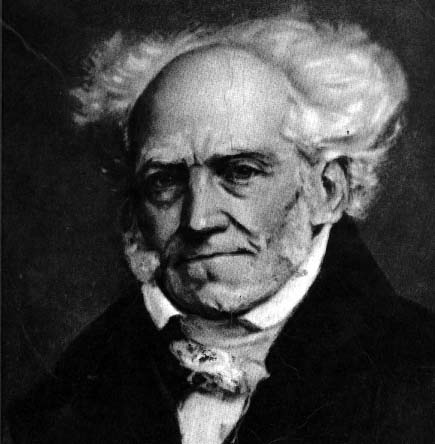


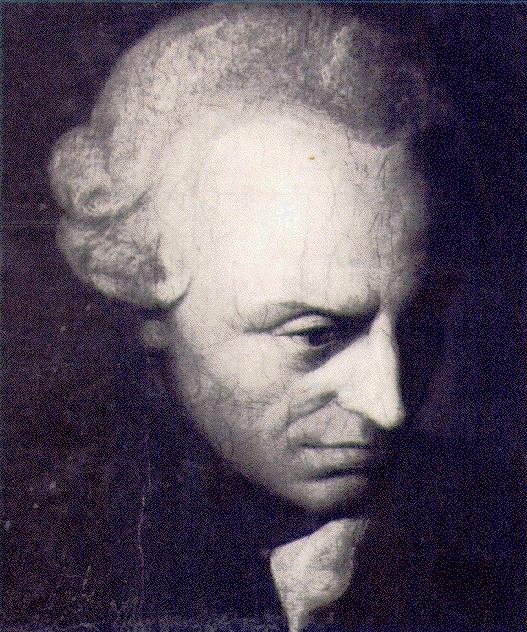
















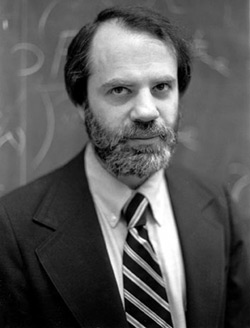




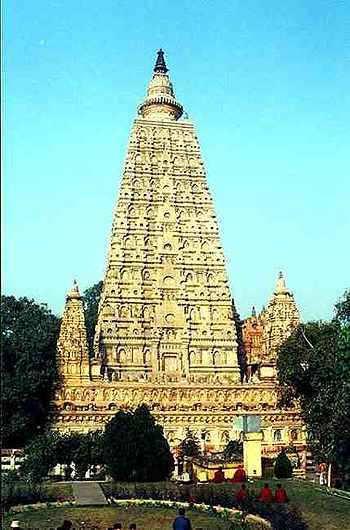



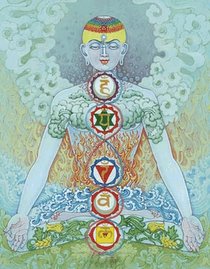



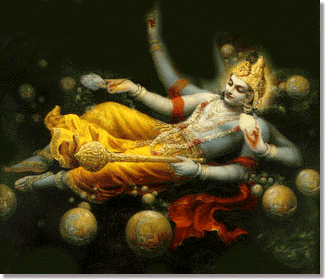






























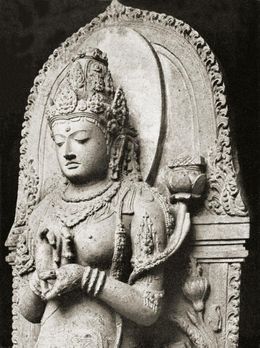
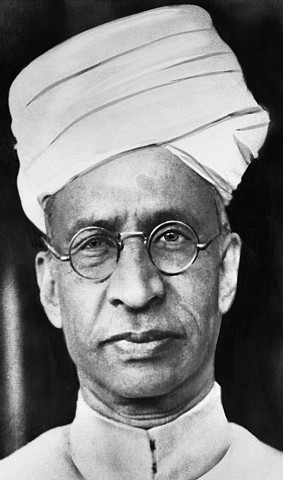
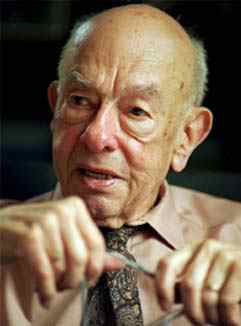













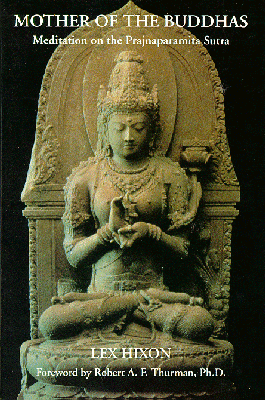

No comments:
Post a Comment